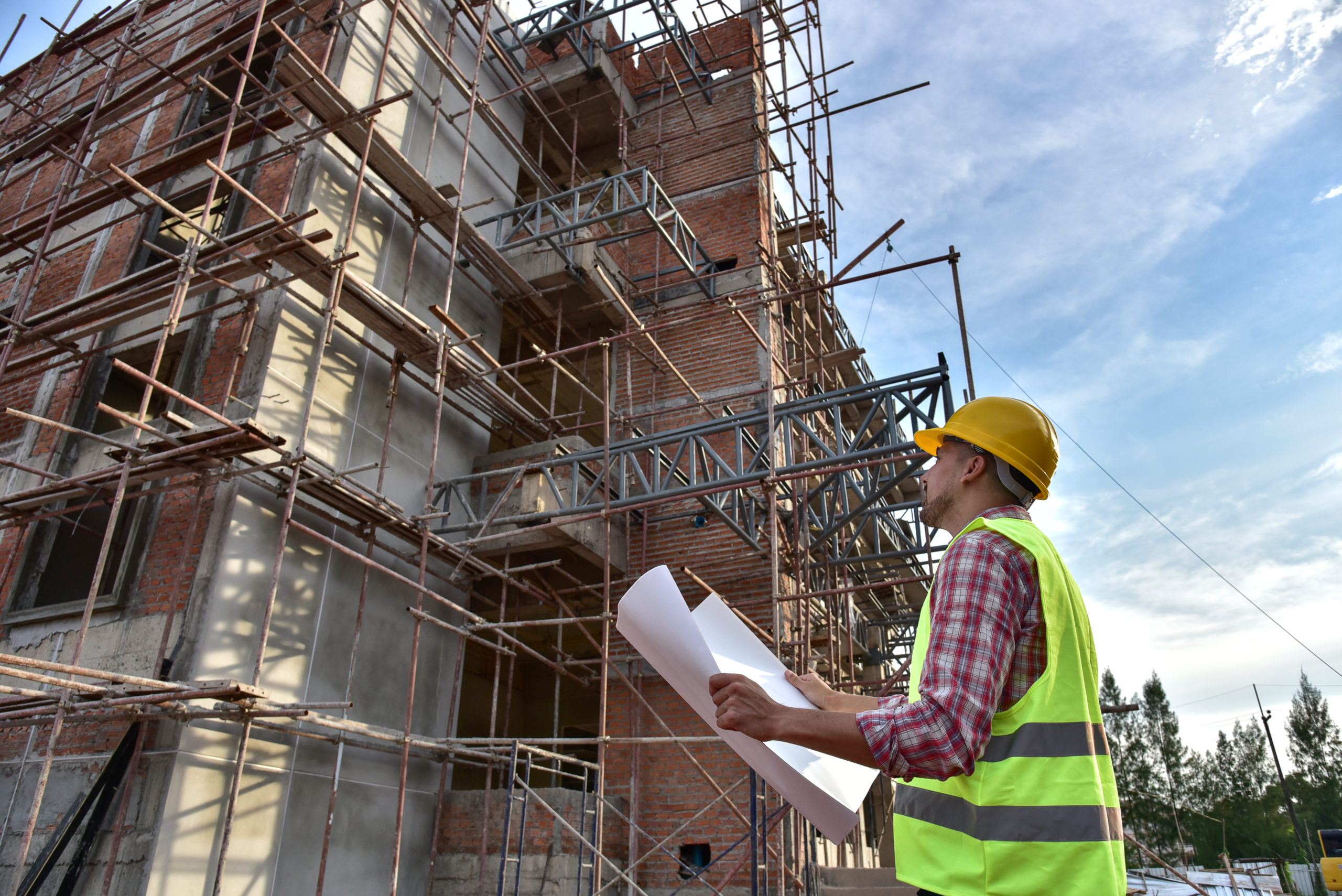
The infrastructure sector in India has seen a lot of progress in the last few years. Despite that, its share in the GDP stands at approximately 5-6%. Moreover, India has set the target to achieve a $5 trillion economy by 2025. For this, increased investment in the infrastructure sector is required.
On the same themes of pushing the infrastructure investment to the next level, CredAvenue organized a webinar with the representatives of IndiGrid, Aseem Infrastructure Finance, and Larsen & Toubro.
As of now, the sector has seen favourable demographics and increasing urbanisation. There have also been innovations, including structures like HAMs and InvITs. What has worked so far is increased Government spending, targeted projects like Smartcities, and investments by foreign players. However, the sector suffers from the lack of equity by Indian promoters and the unavailability of a bond market. Moreover, there have been challenges in raising long-term funds.
The latest Union Budget has put a great emphasis on the development of this sector, which further promotes economic growth and development. However, what plans are set forward for infrastructural development by the Government? What are the challenges in implementation and funding of such projects?
Let us find out.
The Union Budget and the Gatishakti mission
Is Gatishakti going to take us towards that path of the National Infrastructure Pipeline (NIP) which we want to achieve in the medium term?
The plans announced in the budget are directionally right and link well with the NIP. However, there is a need for more details on the execution of these plans.
Mr. Harsh Shah, the CEO and Executive Director at IndiGrid said, “The budget left us desiring more details in terms of execution of the plan, the timelines, and how it will be done, whether our machinery is built for spending this kind of capital within the time frame.”
Focusing on the fact that implementation is key, it is to be seen how the Gatishakti mission is going to link the activities of various players in the system. Co-ordinated efforts are vital for obtaining the desired results.
Moreover, Gatishakti is nothing but a software to coordinate between various Government departments, State Governments, and authorities in cities.
Mr. Shailesh Pathak, Head of Special Initiatives and Developmental Projects at Larsen and Toubro said, “Private players focus on building their cash flows, which can be done in four ways– designing, financing, building, and operating. The main impact of Gatishakti will be on the work that is done before putting the hard hat and the safety jackets on.”
On similar lines, the question of the readiness of the plans arise.
The allocation of the finances is done and the budgets have been prepared, but do we have a strong pipeline?
To estimate how ready we are, the Government must focus on individual projects. If a calendar is set up for the upcoming National Infrastructure Pipeline bids in the next quarter, and the action plan for Gatishakti is announced in advance, private players may be in a better position to analyse and evaluate the bids. This time period is essential for the planning of projects, but the disclosure is missing at present from the Government’s end.
After a developer picks up a project, the financial aspect of it comes into the picture. Once the Gatishakti software is up and running, there will be more clarity on the execution bit of the project. Other gaps in the bidding process arise when there is no accountability, and the timelines are not adhered to. The bidding lifecycle must be understood well. A lack of it may lead to piling of projects in one period and complete dearth of them in another. Better transparency will allow understanding of the bids, so more work can be done beforehand.
The role of NHAI
With ambitious plans, such as Bharatmala, there has been a large focus on the development of roads in the country. As for NHAI, there have been apprehensions that it is heading into a debt trap due to lack of annuity projects.
Moreover, money can either be raised through market borrowings or allocations. To avoid a debt trap, the allocations for NHAI have been more than doubled. In response to this decision, Mr. Shailesh Pathak said that it is “taxpayer’s money well spent”.
However, the allocation for road ministry has only increased by 1-2% in FY23. The rationale behind it is that under the roads ministry, the expenses are either on NHAI or NHIDCL. Here, NHAI has a dramatic increase in allocation. Due to this, NHAI is moving from old two-lane roads to new alignment expressways. The Delhi-Mumbai Expressway is one such great example.
NHAI has planned 22 such expressways, which would need funding over approximately the next four years.
Furthermore, 96-98% of the tolls are now electronic. A shift to fastags at tolls has improved the revenues for NHAI significantly. As more expressways come online, the toll revenues will increase further.
New-age developers in the EPC space
EPC Companies have moved to the development space and developers have entered the EPC space. As a financier, are there any concerns that come up when you see projects from the new-age developers, regarding their ability to operate?
Mr. Virender Pankaj, the CEO at Aseem Infrastructure, said, “India is headed towards a model where EPC developers, people with ability to commission and construct the projects within the time and the budget, are best suited to construct. People who have access to patient long-term capital are best suited to own and manage these assets over a long period”.
Any quality issues shall be corrected by the market, due to the developers’ concern about their reputation. To survive in the business for a long period, upholding the quality is paramount.
With well-established plans about infrastructural growth, the question of proper funding still remains largely unanswered. There are various challenges that come with financial infrastructure projects. Let us understand this aspect of it.
Financing infrastructure projects
The effect of time and cost overruns
It becomes necessary for lenders to keep a cushion for time and cost overruns. At present, the MOSBI reports show about 25-30% cost overruns. Moreover, it also shows time overruns of about 3.5 to 4 years.
In such a case, it becomes important for lenders to budget such extensions in advance. This becomes a huge problem at the macro level. However, it is restricted to certain areas and sectors. In the end, lenders make calls on the basis of the project in consideration.
InvITs in India
InvITs have the features of both debt and equity. These are used by infrastructure developers to free up their capital. In general, sponsors show more interest in privately placed InvITs than the publicly listed ones.
The reason for this is two-fold. Firstly, not everyone is comfortable with the price fluctuations that come with public listing. Secondly, sponsors want the flexibility that comes with the unlisted asset.
However, in the end, being listed or unlisted does not matter. The main aim is to evolve the market and to attract investors to invest in the infrastructure sector.
Mr. Harsh Shah said, “it is a marketplace that is developing and evolving, where there is a role for each type of instrument, whether listed or unlisted. All of them have a particular value. SEBI has done a commendable job by providing all these avenues so people can pick and choose. Because eventually, the goal is one, to attract investment in the infrastructure sector, second, to develop capital markets, and third, to have overall good experience for investors investing in the infrastructure sector.”
Retail investors in the infrastructure market
Retail investment in the infrastructure sector is a relatively new concept. These high-yield assets are not suited for all investors. In the beginning, it is important that these stay with the well-informed, savvy investors. However, it is an excellent product to be introduced into the retail market by increasing the awareness about such assets.
CredAvenue is working towards creating such a market where investors can invest in the infrastructure sector. It aims to create a platform where the investors can meet the issuers and obtaining funds becomes seamless.
This would not just bring increased options for lenders to explore, but also for the borrowers to quickly get the required funding. The infrastructure sector can greatly benefit from this, and the cash crunch in this sector can be reduced significantly. It also helps in channelling the savings of people towards the growth of the economy.




